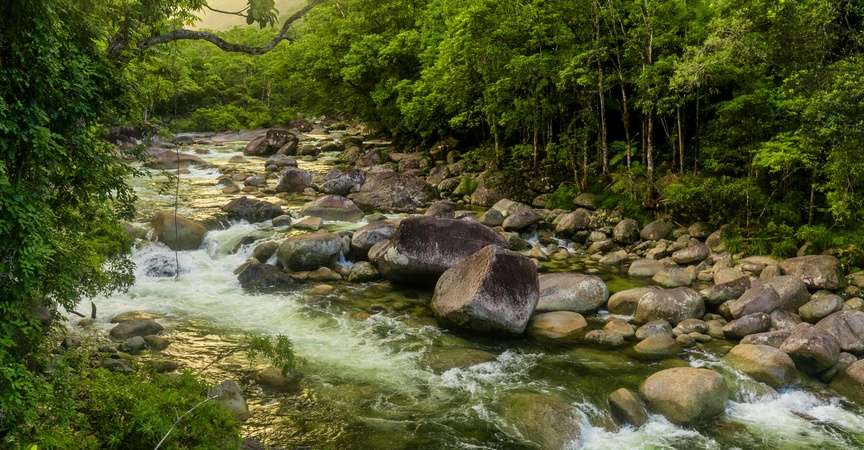
Because of John Muir and Gifford Pinchot, most of our favorite national parks are now surrounded by national forests. Yellowstone National Park, for example, is adjacent to Shoshone National Forest.
In the environmental world, it’s sometimes characterized as the classic debate: should wild areas be preserved for their intrinsic qualities, or should they be conserved for their resources? In other words, should nature be protected and revered without human disturbances, a view espoused by romantic environmentalist John Muir; or should it be used for “the greatest good for the greatest number of people for the longest time,” as 19th-century progressive environmentalist Gifford Pinchot put it?
Today, with a burgeoning population encroaching on our remaining wild places and governmental and private sector economic help scarce, many would say that Pinchot’s beliefs are more realistic for the modern world. In fact, there are even those who would take Pinchot’s notions a step further by saying that natural areas must be managed to benefit humans, if they are to survive at all.
Both conservation and preservation deal with land protections, but the difference between the two lies in the allowable degree of “use” or “consumption” by humankind.

“Conservationists” believe that humans’ relationship with the environment should be sustainable. For example, giving tax refunds to those who install solar panels on their homes would appeal to them.
And, right now, this conversation couldn’t be timelier.
Pinchot vs. Muir: conservation vs. preservation
Conservation typically refers to attempts to make humans’ relationship with the environment sustainable while still extracting natural resources. Conservationists usually support measures that reduce human use of natural resources, but only when such measures benefit humans. For example, a policy that gives tax refunds to people who install solar panels on their homes might be appealing to them, but not one that banned the construction of roads in national parks. Conservationists, then, try to fulfill the biological, cultural, economic and recreational needs of people while minimizing the wear and tear on the planet.
On the other hand, preservation is defined as setting aside areas of land that are so far untouched by humans—or whose sole human inhabitants are native peoples—or that are free of obvious marks of human influence, such as buildings or roads. Preservationists are concerned that people are encroaching on the environment at such a fast pace that we our losing too much of what is natural. Every living thing, say preservationists, has a right to exist and should be granted the space to do so.

“Preservationists” would like to set aside lands that are free of obvious marks of human influence. They contend that every living thing has a right to exist and should be granted the space to do so.
At the turn of the 20th century, Gifford Pinchot, who would eventually start and serve as the first chief of the U.S. Forest Service (USFS), which now manages 193 million acres of forests and grasslands, advocated for his belief that lands owned by the federal government should not only be used for recreation by the general public but also be employed, responsibly, by industry for logging and mining, by scientists for research projects and for many other purposes.
At the time, many citizens who wanted to prevent the commercialization of America’s forests and to preserve them as they were openly opposed Pinchot. John Muir, the most prominent preservationist in our history, was at the forefront of the debate on how to better manage our public lands. His sentiments were that we should keep our remaining wild areas pristine because of their soul-stirring beauty and our inner need for such areas as an escape. Pinchot and Muir were at opposite ends of the spectrum between environmental conservation and preservation, and the discourse between these two was well publicized, becoming a common dinnertime topic at many family’s tables.
With the help of his friend President Theodore Roosevelt, Pinchot prevailed. He implemented his ideas of conservation, pushing to balance the protection of public lands with the economic growth created by the abundant natural resources available within our forests. Over time, the tourism created by the recreational opportunities found in national forests became a multibillion-dollar economic engine for hundreds of small communities across America.

Conservationist Gifford Pinchot was the first chief of the U.S. Forest Service, which was founded in 1905. ©U.S. Forest Service
Another of Pinchot’s concepts from his conservation philosophy resulted in creation of the Forest Products Laboratory, the world’s preeminent wood research laboratory and a behemoth of invention and technology located in Madison, Wisconsin, my hometown.
Today, there’s a good chance that your favorite camping site, hiking path, ski run or swimming spot is in a national forest. And the house you live in and some of the furniture in it was probably constructed with wood harvested in a national forest.
Preservation and conservation, together
Muir’s vision, however, was far from forgotten. It resulted in protecting forever some of the nation’s most iconic open spaces totaling more than 85 million acres. In 1916, President Woodrow Wilson found a compromise between conservation and preservation when he created the National Park Service (NPS) to preside over the growing number of designated national parks. Together the USFS and the NPS came to share the responsibility of environmental stewardship, essentially giving the USFS and the NPS the roles of conservation and preservation, respectively.

John Muir was a founding father of the American outdoors preservation movement, which resulted in the establishment of the U.S. National Park Service in 1916. ©U.S. National Park Service
Today, it’s no mistake that most of our favorite national parks—such as Yellowstone and Yosemite—are surrounded by national forests.
Human relevance requirement
Still, there are those who would take conservation principles a step further. About 10 years ago, the then chief scientist of The Nature Conservancy, Peter Kareiva, shocked environmentalists when he said in an article in Nature Conservancy Magazine that safeguarding Earth’s biodiversity should not be Job One. The ultimate goal, he said, is to better manage nature for the benefit of humans, taking Pinchot’s tenets to the extreme.
Although the knee-jerk reaction to such a statement is that Kareiva is antienvironment, he and his supporters say he is not. He does believe, though, that the days of John Muir’s pristine wildernesses are long gone. Our fingerprints are found everywhere on the planet. It’s imperative, he thinks, that we focus on creating healthy environments to meet humankind’s basic needs first (clothing, food, shelter and water). If we don’t, nothing we say or do regarding the environment will have any impact. People must see nature as relevant to human lives if it is to be protected at all.

If the remaining wild areas on our planet are to be protected, people must see them as relevant to their lives. ©Ben Bressler
Right-of-way
Some feel that Kareiva is selling us short; we aren’t always self-interested and will, sometimes, act with altruistic motives. Deep inside and as important to our well-being as clothing, food, shelter and water, we desire places that remain almost as they did when the world was new, such as the Galapagos Islands or the remote Arctic. Our innate longings and “better natures” still have sway with us.
It’s possible that Pinchot and Muir may have considered themselves as working on the same team, rather than as mortal enemies in the environmental battle. I’m not sure, however, that conservationists and preservationists think of themselves in the same way today. I do hope and choose to believe that Muir’s preservation and Pinchot’s conservation philosophies are not at odds; that together they will play a huge role in protecting our natural, open spaces for generations to come. While conservation is aimed at repairing the damage, preservation seeks to prevent it from occurring in the first place.
It’s said that during one overnight government expedition to the Grand Canyon, Gifford Pinchot and John Muir were walking together on a rocky, canyon trail when they came upon a tarantula. Gifford raised his boot to step on it, but John Muir stopped him. Muir reportedly told Gifford that the tarantula had just as much right to be on the trail as they did.

On a government expedition to the Grand Canyon, John Muir and Gifford Pinchot spent time sharing stories about wilderness adventures.
That evening, the two men stayed up until midnight, telling each other stories about their adventures in the wilderness.
Here’s to finding your true places and natural habitats,
Candy
























